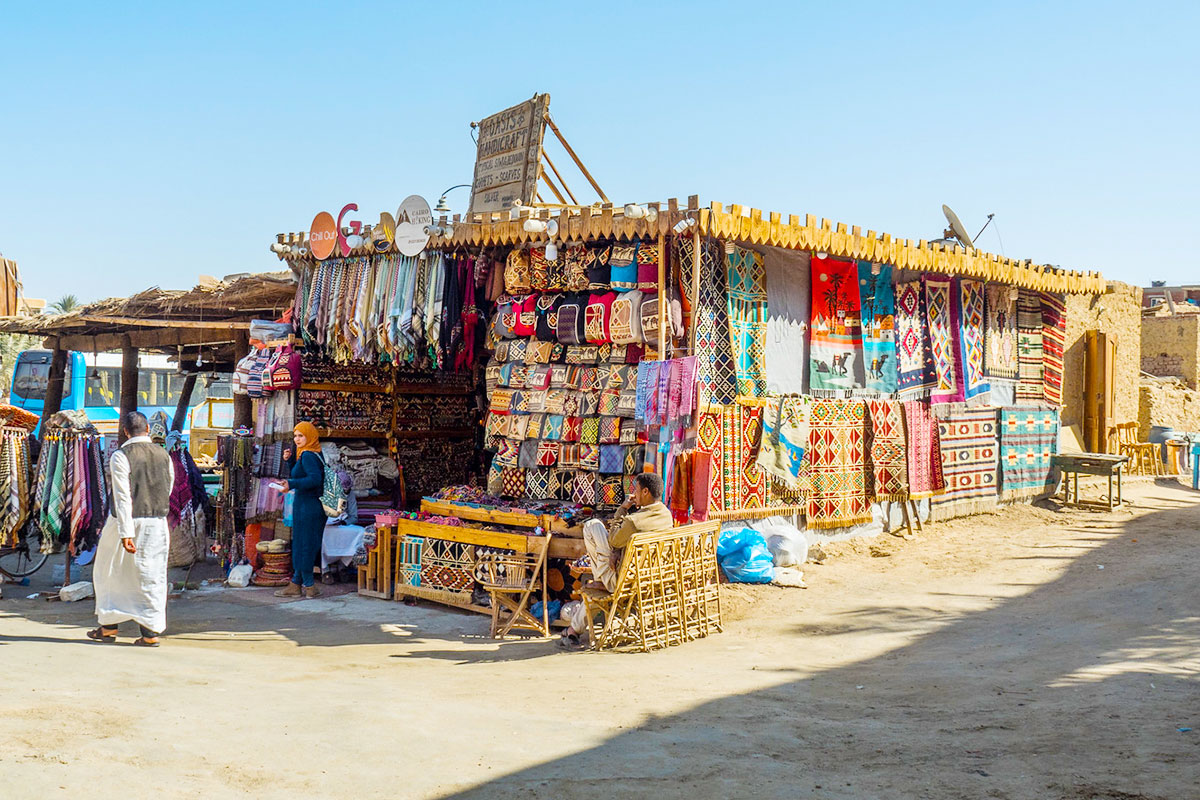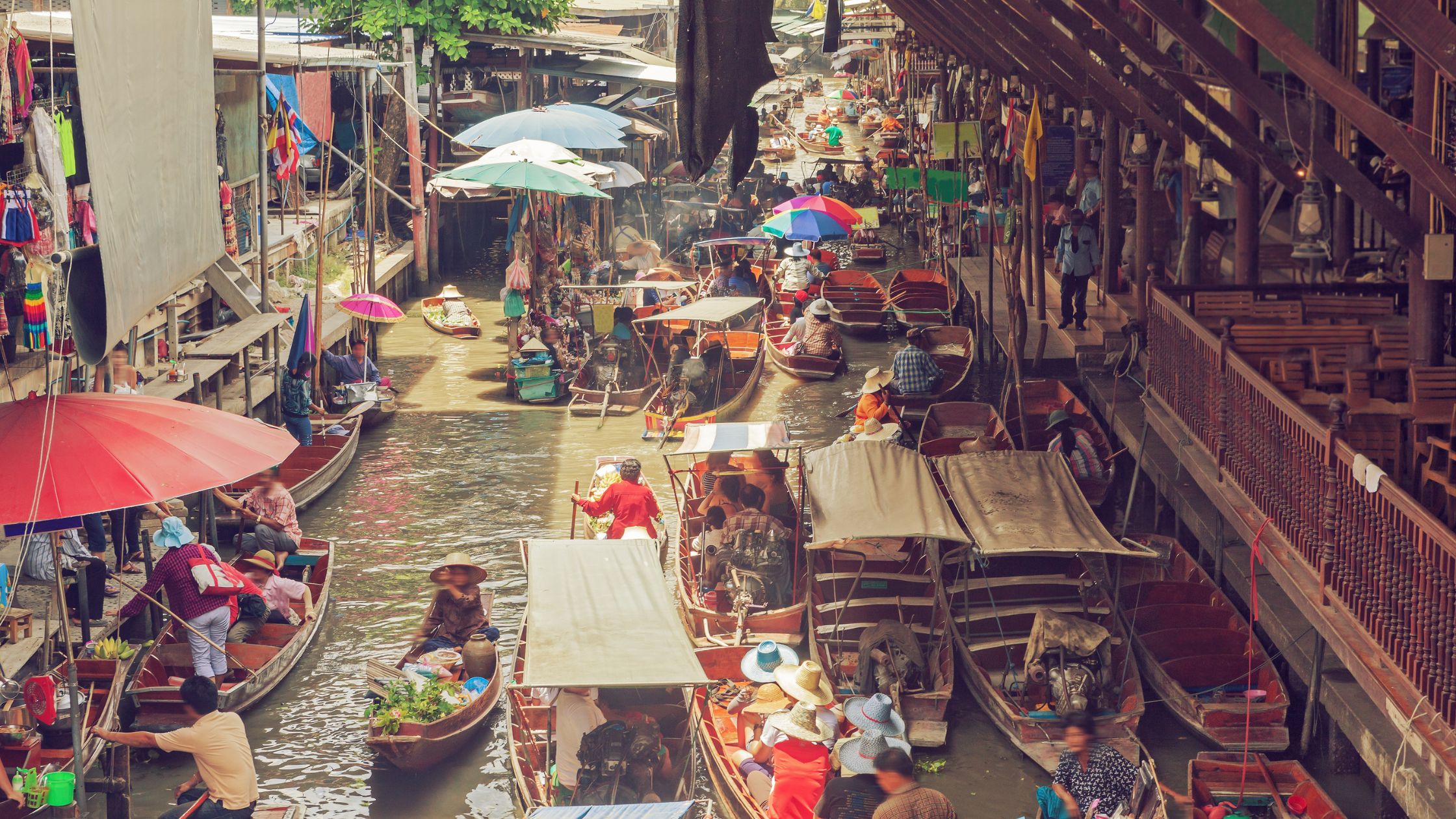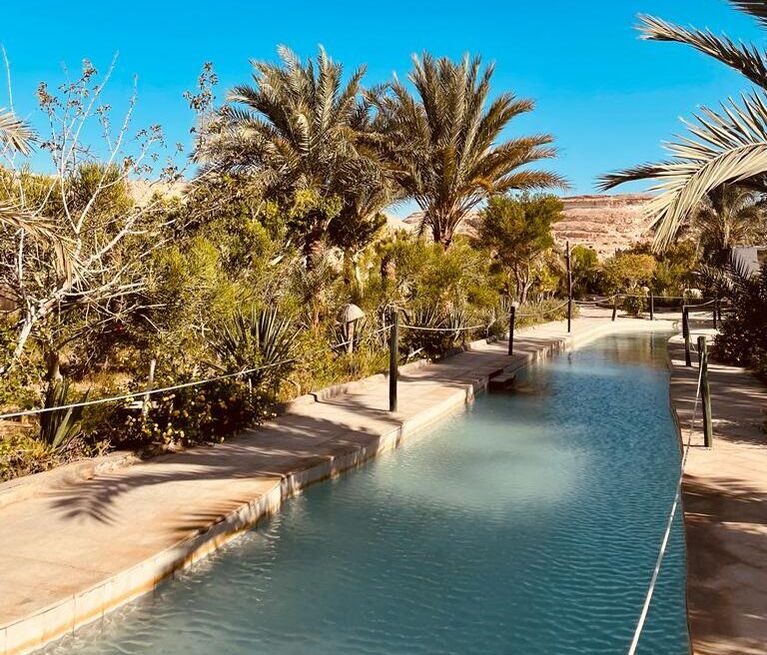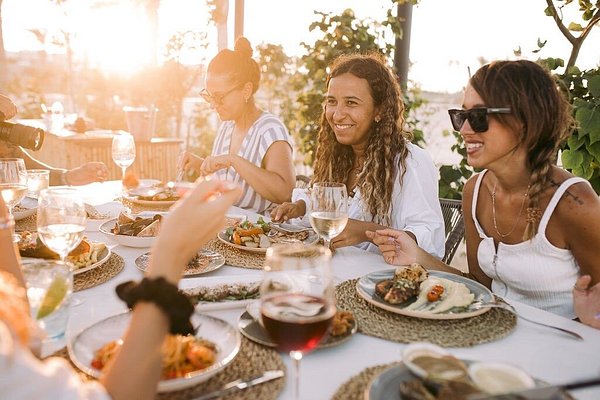
Introduction
As I stepped into Siwa’s vibrant local market, the air was filled with the tantalizing aromas of spices, and the colorful displays beckoned me closer. It’s not just a market; it’s an experience that intertwines culture, history, and community.
Why Siwa’s Market is Special
What makes this market truly unique? Here are a few highlights:
- Cultural Fusion: A mix of Berber, Egyptian, and Mediterranean influences.
- Handcrafted Treasures: Each stall tells a story through traditional handicrafts.
- Sustainable Practices: With a focus on eco-friendly goods, there’s a strong sense of responsibility towards the environment.
From the moment I entered, I knew I was about to embark on a journey through the heart of Siwa’s rich heritage.

The History of Siwa’s Local Market
Reflecting on my initial impressions, I found myself drawn to the rich history that shaped Siwa’s local market. This place is steeped in stories that date back centuries, offering a fascinating blend of tradition and commerce.
The Origins of the Market
Siwa’s market has been a vital hub for trade since ancient times, serving both locals and travelers alike. Here are some notable historical aspects:
- Ancient Trade Routes: Siwa was an important stop on trade routes connecting Egypt to the Mediterranean and Libya.
- Cultural Exchange: The market has long been a melting pot, facilitating the exchange of goods, customs, and ideas.
I remember talking to a local elder who shared tales of bustling caravans filled with goods, showcasing how the market has evolved while retaining its charm. The market embodies the rhythms of everyday life in Siwa, where the past beautifully meets the present.
Exploring the Cultural Diversity
With the rich history of Siwa’s market still fresh in my mind, I was eager to delve deeper into the cultural diversity that thrives here. The market is a true reflection of the region’s heritage, showcasing vibrant customs through its traditional handicrafts and delectable local cuisine.
Traditional Handicrafts
Walking through the market, I was enchanted by the array of traditional handicrafts on display. Each item is not just a product; it’s a piece of art that tells a story. Here are some standout crafts:
- Handwoven Textiles: Soft fabrics adorned with intricate patterns demonstrate local craftsmanship.
- Pottery: Beautifully painted ceramics reflect the region’s culture and traditions.
- Jewelry: Unique designs, often made from silver and gemstones, showcase the skilled artisans’ creativity.
I remember picking up a handcrafted pottery piece—its smooth surface and vibrant colors drew me in, and I could almost feel the history behind it.
Local Cuisine
After soaking in the sights, my senses were tantalized by the delicious local cuisine wafting through the air. The food here reflects the cultural melting pot of Siwa, with flavors that burst of authenticity. Check out these local delights:
- Bazeen: A traditional bread made from barley, typically served with vegetables and meat.
- Date and Olive Dishes: Harnessing the region’s agricultural bounty, these dishes are staples in many households.
- Mint Tea: A refreshing drink that’s a common ceremonial tradition, perfect after a long day of exploring.
As I savored a delicious plate of bazeen one afternoon, I felt a strong connection to the myriad cultures that had come together in this enchanting place. The market isn’t merely a place to shop; it’s a vibrant tapestry of life that I loved experiencing firsthand.

The Role of Women in Market Activities
Continuing my journey through Siwa’s vibrant market, I was especially captivated by the remarkable role women play in its activities. These women are not just participants; they are the backbone of the market, contributing significantly to its cultural and economic dynamics.
Women as Entrepreneurs
As I wandered through the bustling stalls, I couldn’t help but notice the fierce entrepreneurial spirit among women. Many of them own their businesses, showcasing their unique products:
- Handmade Crafts: From beautiful textiles to intricate jewelry, women create and sell items that reflect their heritage.
- Food Vendors: Permit me to say, the flavor-packed dishes are often crafted by skilled local women, directly passing down family recipes.
I spoke to a woman who proudly shared her journey of starting her own stall after learning crafting skills from her grandmother. Hearing her passion for preserving these traditions warmed my heart.
Community Leadership
Women in Siwa also play a vital role in the community. They often lead initiatives that promote local culture and support other women. Here’s what this looks like:
- Workshops: Many women organize workshops to teach skills like weaving and pottery, ensuring these crafts thrive in the next generation.
- Support Networks: Women rally together to empower one another, providing mentorship and advice for entrepreneurship.
I was inspired by the strong sense of community as they worked collaboratively, creating an environment where both creativity and support flourished. Their contributions transform the market into a lively community hub, full of stories and shared experiences that enrich the cultural landscape of Siwa.

Sustainability Practices in Siwa’s Market
After experiencing the remarkable contributions of women in Siwa’s market, I was eager to explore how sustainability practices were woven into its fabric. The commitment to environmentally friendly practices here is commendable and truly reflects the community’s respect for their surroundings.
Eco-Friendly Products
As I wandered from stall to stall, it was evident that many vendors prioritize sustainability. Here are some ways eco-friendly practices are embraced:
- Natural Materials: Artisans often use locally sourced materials, reducing transportation emissions and supporting local agriculture.
- Biodegradable Packaging: Many food vendors use leaves or paper instead of plastic, ensuring minimal environmental impact.
I vividly remember purchasing a handmade basket crafted from palm leaves, which not only looks beautiful but is also entirely biodegradable. It felt good to support the planet while celebrating local craftsmanship.
Awareness and Education
The market is also a space for raising awareness about sustainability. Here’s how:
- Workshops: Vendors often hold sessions on sustainable practices, including composting and organic farming, to educate others.
- Community Initiatives: Local organizations work together to promote eco-friendly events and encourage consumers to make responsible choices.
I had the pleasure of attending a workshop where locals shared innovative ways to reduce waste in daily life, leaving me inspired to adopt similar practices in my own community. It’s uplifting to witness Siwa’s market becoming a model for sustainability, preserving both culture and the environment for future generations!

Tourist Experiences at the Market
Having discovered Siwa’s commitment to sustainability, I couldn’t wait to dive into the unique experiences that tourists often share when visiting the market. It’s not just a shopping destination; it’s a vibrant cultural hub filled with unforgettable moments.
Immersive Interactions
One of the highlights of visiting the market is the chance to engage with the locals. Here’s what you can expect:
- Friendly Vendors: Sellers are often eager to share the stories behind their crafts, allowing you to connect personally with the culture.
- Hands-On Activities: Many visitors enjoy participating in workshops—like weaving or pottery—where learning from skilled artisans becomes a cherished memory.
I remember chatting with a scarf vendor who showed me how to tie a traditional fabric in various ways, turning a simple purchase into a new skill.
Unique Shopping Opportunities
The market offers an array of products that are perfect for taking home as souvenirs:
- Local Art: Beautiful paintings and crafts that reflect the essence of Siwa.
- Spices and Herbs: Aromatic treat selections that make for perfect gifts or personal treasures.
As I strolled through the market with treasures in hand, I loved the vibrant energy and camaraderie among visitors and locals alike. Each corner of the market offered new sights, sounds, and tastes, creating an experience that was not only memorable but also deeply enriching. Siwa’s market truly stands out as a must-visit destination for anyone eager to explore authentic culture!

Verifying the Authenticity of Products
After immersing myself in the bustling tourist experiences at Siwa’s market, I realized the importance of ensuring that the products I purchased were authentic. It’s essential for both supporting local artisans and getting true representations of this vibrant culture.
Spotting Genuine Handicrafts
When shopping, here are some tips I found helpful in verifying authenticity:
- Ask About the Crafting Process: Vendors often love to share the story behind their creations. Their knowledge can reveal a lot about the product’s authenticity.
- Check for Artisanal Marks: Look for signature marks or tags indicating that items are handcrafted by local artisans.
During my visit, I had an enlightening conversation with a weaver about the intricate techniques used in her handicrafts; her passion was palpable and added value to my purchase.
Understanding the Pricing
Authentic local products often come with fair pricing. Consider the following:
- Know the Value: Handmade items may seem pricier than mass-produced goods, but the level of craftsmanship justifies the cost.
- Negotiate Wisely: While haggling is part of the market experience, be mindful that extremely low prices might reflect a lack of authenticity.
When I inquired about a beautifully woven rug, the vendor explained the time-consuming process that goes into each piece, helping me appreciate the price even more. Overall, being intentional about verifying authenticity not only enhances your shopping experience but also fosters a deeper connection to Siwa’s rich cultural tapestry!

Supporting Local Businesses
With a newfound understanding of product authenticity, I felt inspired to actively support the local businesses that make Siwa’s market so special. Each purchase is not merely a transaction; it’s a way to invest in the community and its rich culture.
The Impact of Your Purchase
Supporting local businesses in Siwa goes beyond just acquiring unique items. Here’s why it matters:
- Empowerment: Your spending helps empower artisans and vendors, allowing them to continue their crafts and practices.
- Cultural Preservation: Purchasing traditional items ensures that various cultural practices and skills are preserved and passed on to future generations.
I can still recall the joy I felt when I bought a handwoven basket from an elderly woman. She shared how her craft has been in her family for generations, and my support meant the world to her.
Engaging with the Community
Shopping locally opens doors to meaningful interactions. Here’s how to deepen your engagement:
- Attend Local Events: Look for workshops, festivals, or markets that showcase local arts and crafts.
- Share Your Experiences: Spread the word about your favorite vendors and their stories, helping to build community awareness.
During my time in Siwa, I participated in a small gathering where local artisans showcased their work, allowing me to connect personally with the people behind the products. Supporting local businesses enriches your travel experience and contributes to the ongoing vibrancy of Siwa’s cultural landscape. Each choice made in the market supports a story, a family, and the future of this enchanting oasis!

Understanding Market Dynamics
After learning about the importance of supporting local businesses, I became curious about the dynamics that drive Siwa’s market. Understanding these factors can enhance your experience and appreciation for the entrepreneurial spirit present in this vibrant space.
The Flow of Goods and Services
Siwa’s market thrives on a unique interplay of supply and demand. Here’s what I observed:
- Seasonal Offerings: Different times of the year bring varied products, influenced by local agricultural cycles and festivals.
- Local Supply Chains: Many vendors source their materials from nearby farms or artisans, creating a miniature ecosystem of trade.
I remember visiting during the date harvest season, where stalls overflowed with fresh dates, each one sweeter than the last, showcasing the area’s agricultural abundance.
Consumer Behavior and Trends
Understanding how shoppers influence the market can help you navigate it better. Consider these insights:
- Tourist Interest: Many visitors are drawn to traditional crafts, pushing vendors to cater to this market while still keeping local flavor.
- Word-of-Mouth: Recommendations carry weight; many shops thrive based on returning customers and referrals.
During my visit, I noticed certain stalls buzzing with activity, their owners sharing stories to attract attention. The vibrant dynamics of the market created a lively atmosphere, and engaging with vendors made the experience all the more enriching. By understanding these market dynamics, you’ll find yourself enjoying the unique and multifaceted culture that Siwa has to offer!

Cultural Significance of Market Rituals
Having delved into the market dynamics, I was eager to explore the cultural significance of the rituals that play out in Siwa’s market. These rituals are not just traditions—they encapsulate the spirit and values of the community, making every visit a unique experience.
Time-Honored Traditions
In Siwa’s market, every corner tells a story through its rich traditions. Here are some key rituals I observed:
- Greeting Rituals: Locals often exchange pleasantries as they meet, reinforcing community bonds and welcoming visitors warmly.
- Bargaining Practices: Haggling isn’t just about price; it’s a dance of respect and skill, reflecting the cultural art of negotiation intrinsic to this environment.
I remember partaking in a friendly negotiation with a vendor over a beautiful shawl. The warmth and laughter shared during the process turned what could have been just another transaction into a memorable interaction.
Celebrating Community and Identity
Many rituals are deeply embedded in the fabric of daily life. Here’s how they resonate within the community:
- Festivals and Events: Special occasions often see vibrant market activities, where locals celebrate together, showcasing their arts, crafts, and cuisine.
- Symbolic Offerings: It’s common to see vendors make small offerings to invoke blessings on their stalls, demonstrating a profound connection to their heritage.
During my visit, I had the good fortune of witnessing a festival ambiance in the market, where music, dance, and laughter filled the air. Participating in these rituals not only opened a window into the local culture but also made me feel like an integral part of the Siwa community. Each ritual enriches the market experience, making it a vibrant tapestry of life filled with meaning and tradition!





